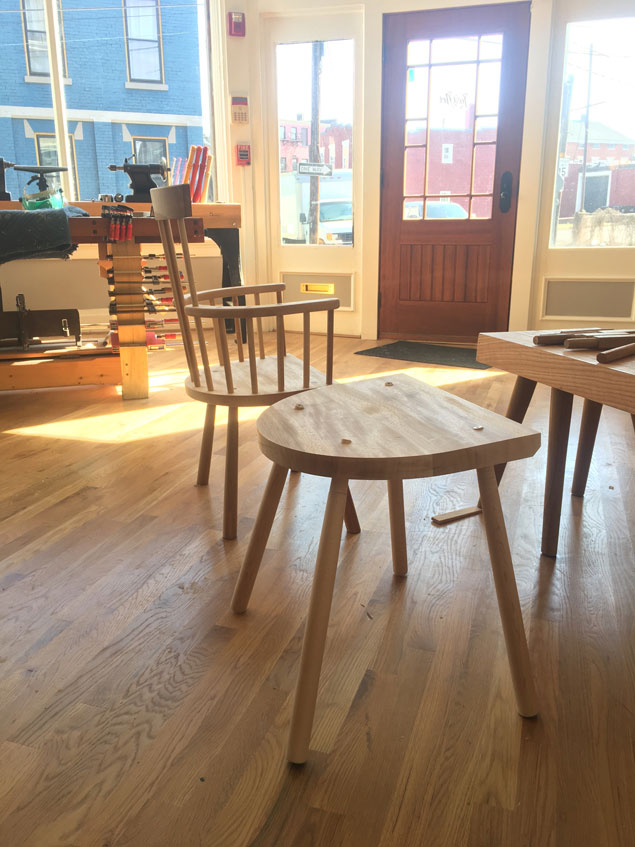We may receive a commission when you use our affiliate links. However, this does not impact our recommendations.
One of the classic shapes for the seats of chairs or stools is the D shape. If you make or appreciate Welsh chairs (like I do), it’s a shape you see a lot. Yet many beginning chairmakers fret over making a D-shaped seat of their own dimensions.
I admit that when I started making chairs, I was similarly befuddled and preferred to trace the shapes of old seats or work from patterns drawn by other chairmakers.
That’s because the seat’s geometry eluded me. Was it a true ellipse? A false ellipse? Something else mathematical?
As with most things in woodworking, the answer was incredibly simple: It’s a half-circle married to a rectangle. Here’s how to lay it out.
Most modern chairs (for modern bottoms) are about 19” to 20” wide on average. The depth can be anywhere from 14” to 16” or even 17”.
So you start with the width of the seat. It’s 20” so the half-circle portion of the seat has a radius of 10”. Set your trammel points to 10”.
A simple half-circle seat isn’t deep enough – 10” in this case. Your butt would slip off it. So you need to make it deeper. Again, start with the width of the seat (20”) and that’s the width of your rectangle. The depth of the rectangle is some number that will get you someplace reasonable for the American posterior. In this case I decided the seat as a whole should be 15-1/2” deep so I made my rectangle 5-1/2” deep.
So I laid out a 5-1/2” x 20” rectangle on my seat stock. I found the center of one of the 20” segments. I put a trammel point on that centerpoint and drew the half-circle for the back of the D. Done.
— Christopher Schwarz
Editor’s note: Want to learn more about chairmaking? Check out these two videos:
“No-fear Chairmaking,” by Christopher Schwarz and “Build a Welsh Stick Chair,” by Don Weber.
Here are some supplies and tools we find essential in our everyday work around the shop. We may receive a commission from sales referred by our links; however, we have carefully selected these products for their usefulness and quality.












This is bizarrely timely for me. I just cut an elm blank for a seat, and it wasn’t looking like it was going to meet the dimensions in ADB (I originally sawed the round for firewood, and it was coming up short), so I was trying to figure out how to reconfigure. This is makes great sense! Now please stop lurking in my shop, watching my every move, and stealing my beer.